Exploring the Ancestral Poles of Haida Gwaii
The story of a series of repatriated totem poles, originally removed from Gwaii Haanas in the 1950s, has fascinated Haida artists Jaalen and Gwaai Edenshaw for many years. These ancestral poles, first carved and raised in the early nineteenth century, are storied with the passage of time and the secrets and controversy that surround them. After spending several decades in museum collections since their removal, the poles were repatriated to Skidegate in the mid-1970s only to be burned in a fire shortly after. This tragic destruction of the precious poles nevertheless left enough form of their original design to merit Gwaai and Jaalen’s deep study.
Using the latest 3D technology for scanning and working with 3D modelling professionals they sought to document the burned poles as well as other poles at village sites like Skedans. Connecting this work with their on-going investigations in museum collections, they were able to refine their own knowledge of Haida design and use these new insights in the carving of new poles. The latest, the new Skedans pole, will be raised this fall.
This online exhibit brings forward moments of this journey that started in the shed where the poles still lie charred in Skidegate and took them to remote ancient village sites around Haida Gwaii and museums across North America. It culminates in the carving of the Skedans pole in Old Massett.
3D Scanning to Create the Record
The team tested different scanning technologies to determine what would work best in the field. The Haida village sites are remote and rugged, so they needed technology up to the task.
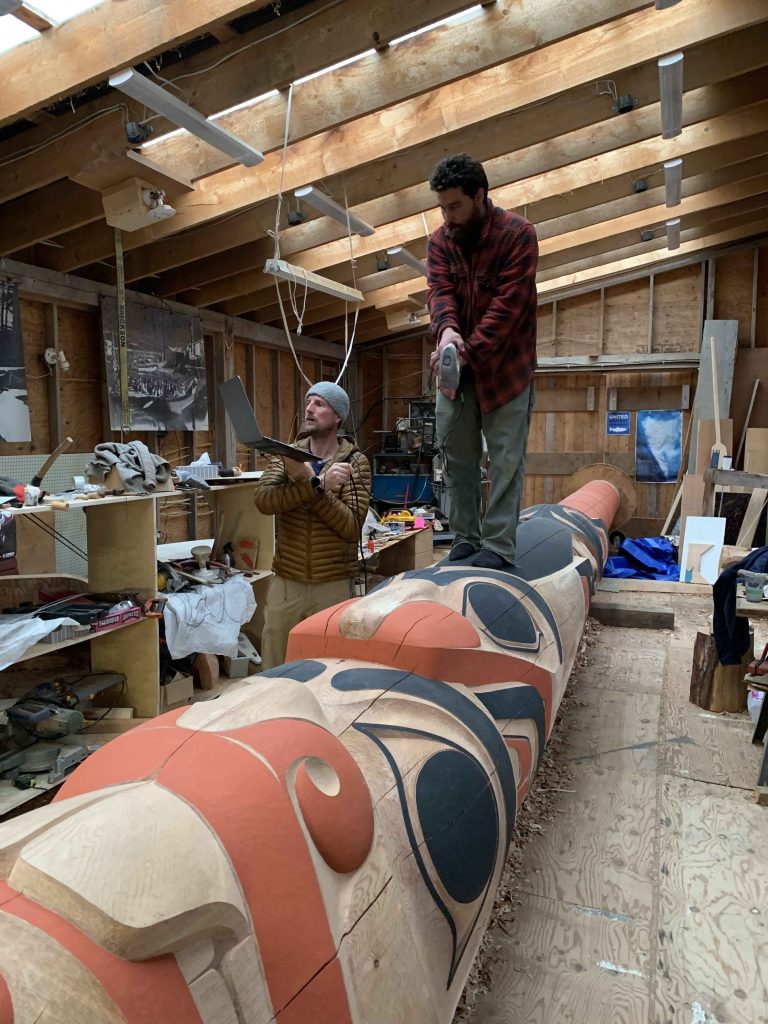
The artists’ journey then took them to various remote village sites including Tanu, Skedans, SGang Gwaay and Yan on the north coast. Their goal was to capture all of the ancestral artworks remaining, in 3D, before they melt into the earth. The Haida way is not to interrupt this cycle of cedar decay and supporting new life, so this record will be invaluable as a study tool for the Haida.


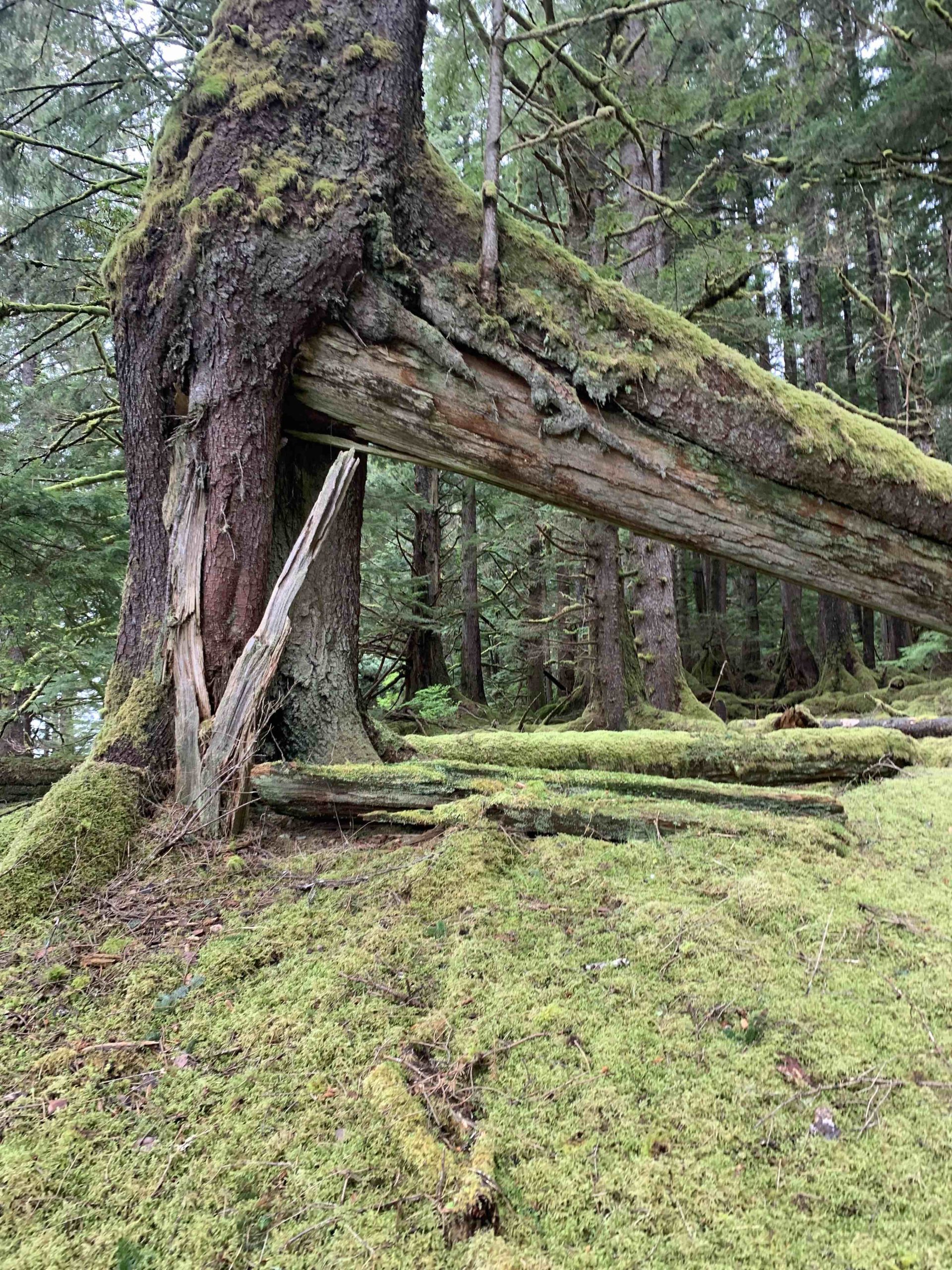
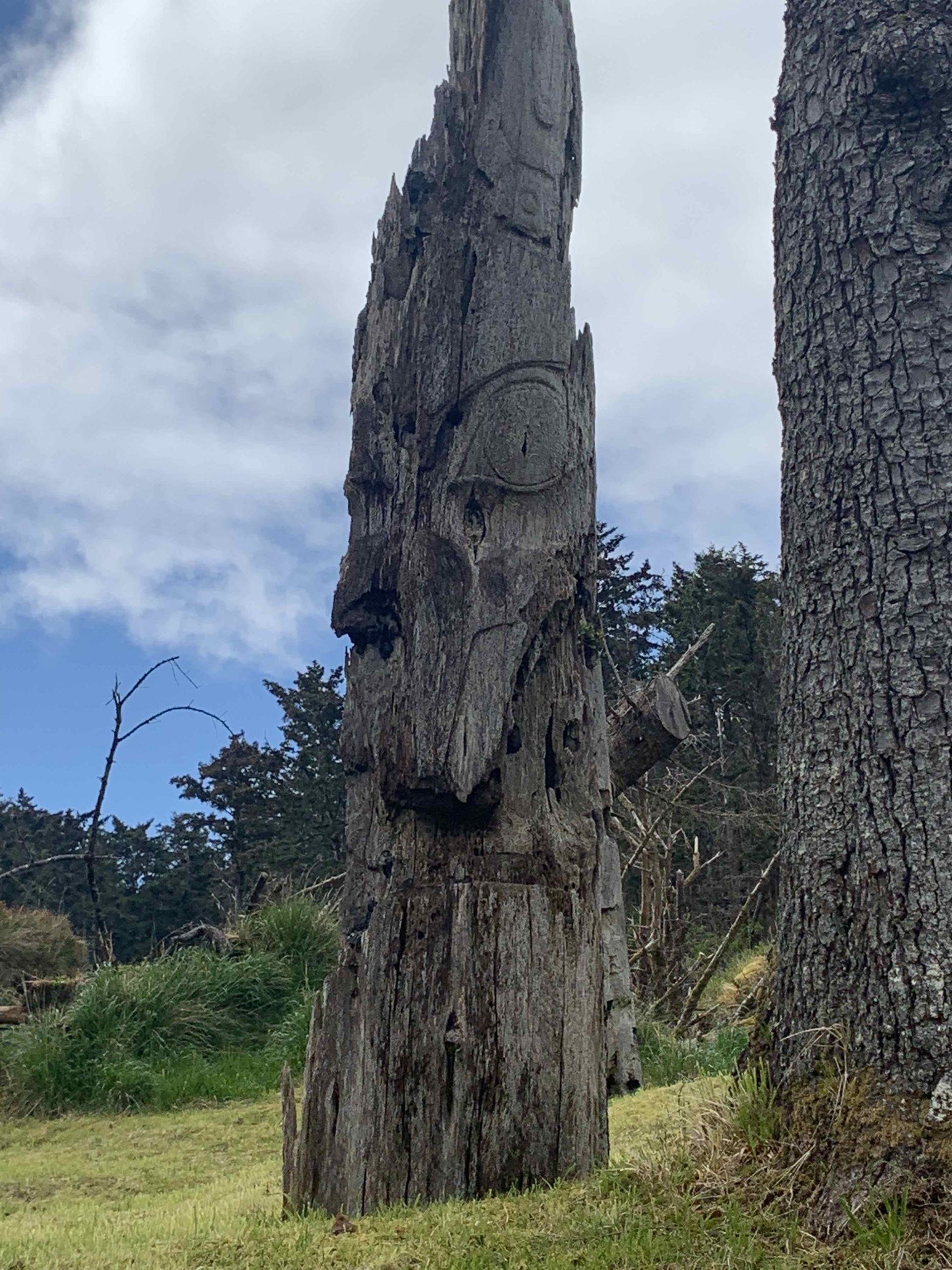
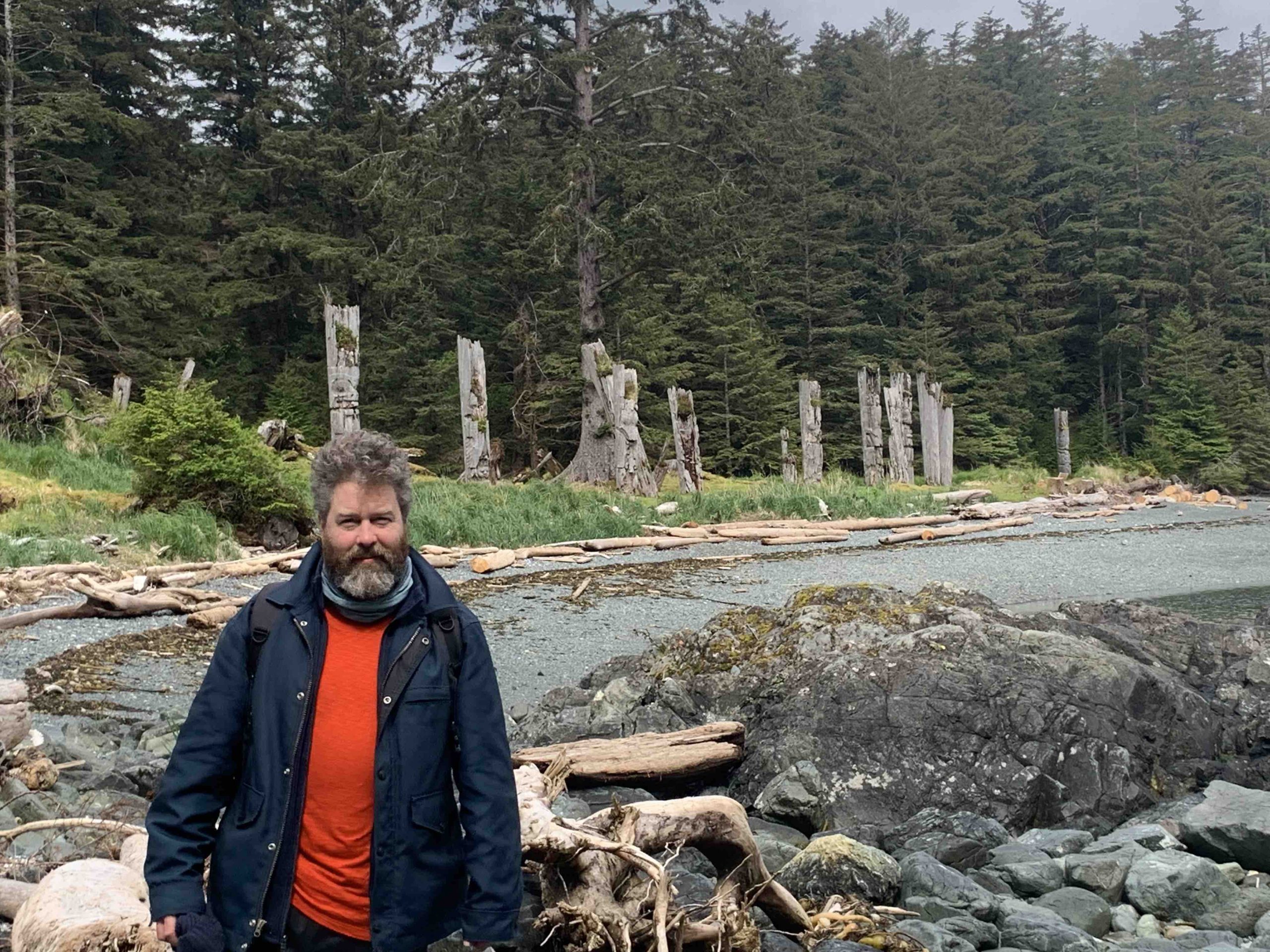
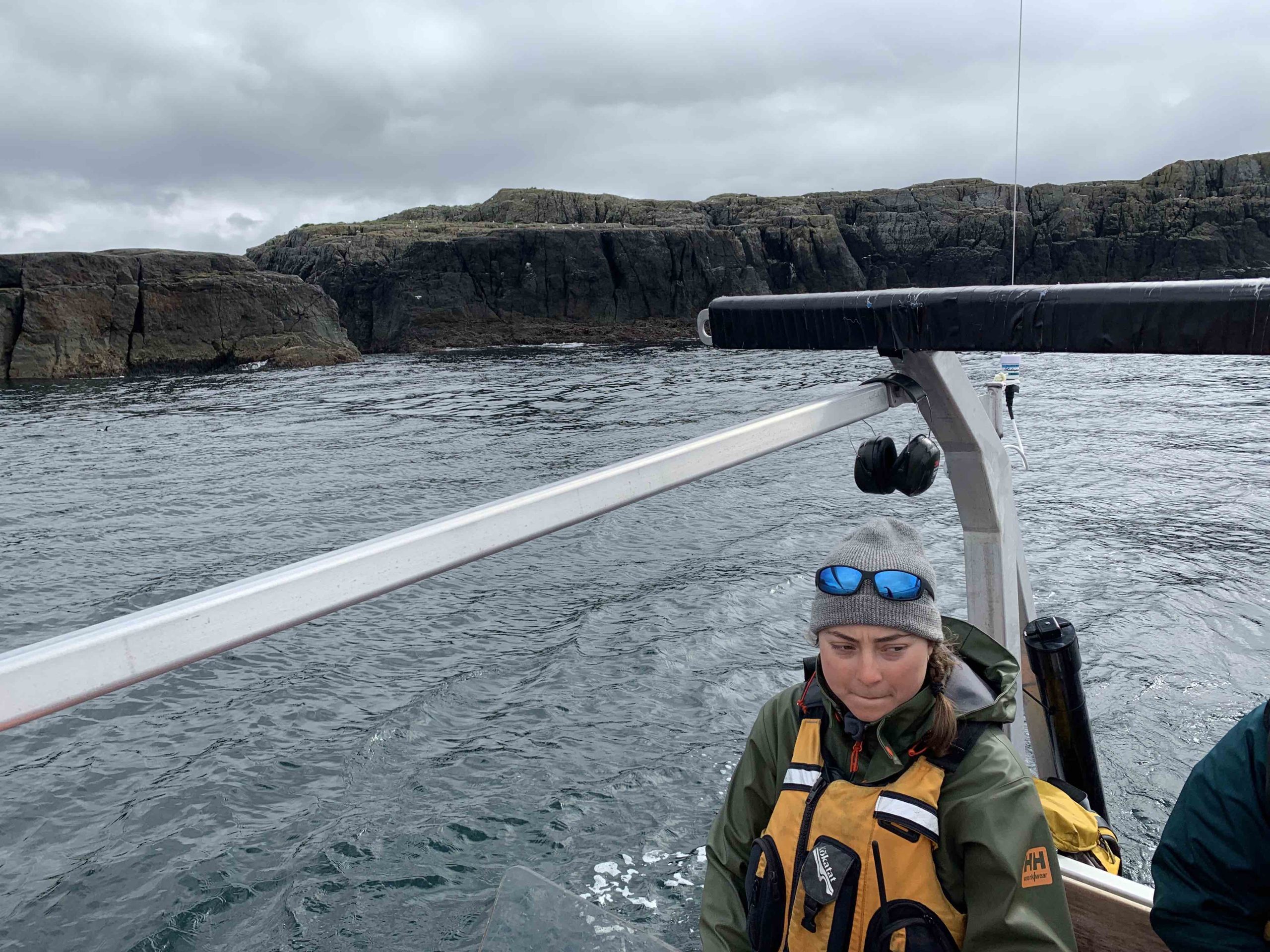
3D Models of Ancestral Poles
In Skedans, SGang Gwaay and other ancestral village sites, Gwaai, Jaalen and team 3D scanned ancient poles now melting into the ground to have lasting records of their astounding designs. Working with a modelling professional, the 3D meshes were cleaned up for artifacts, resulting in highly accurate models.
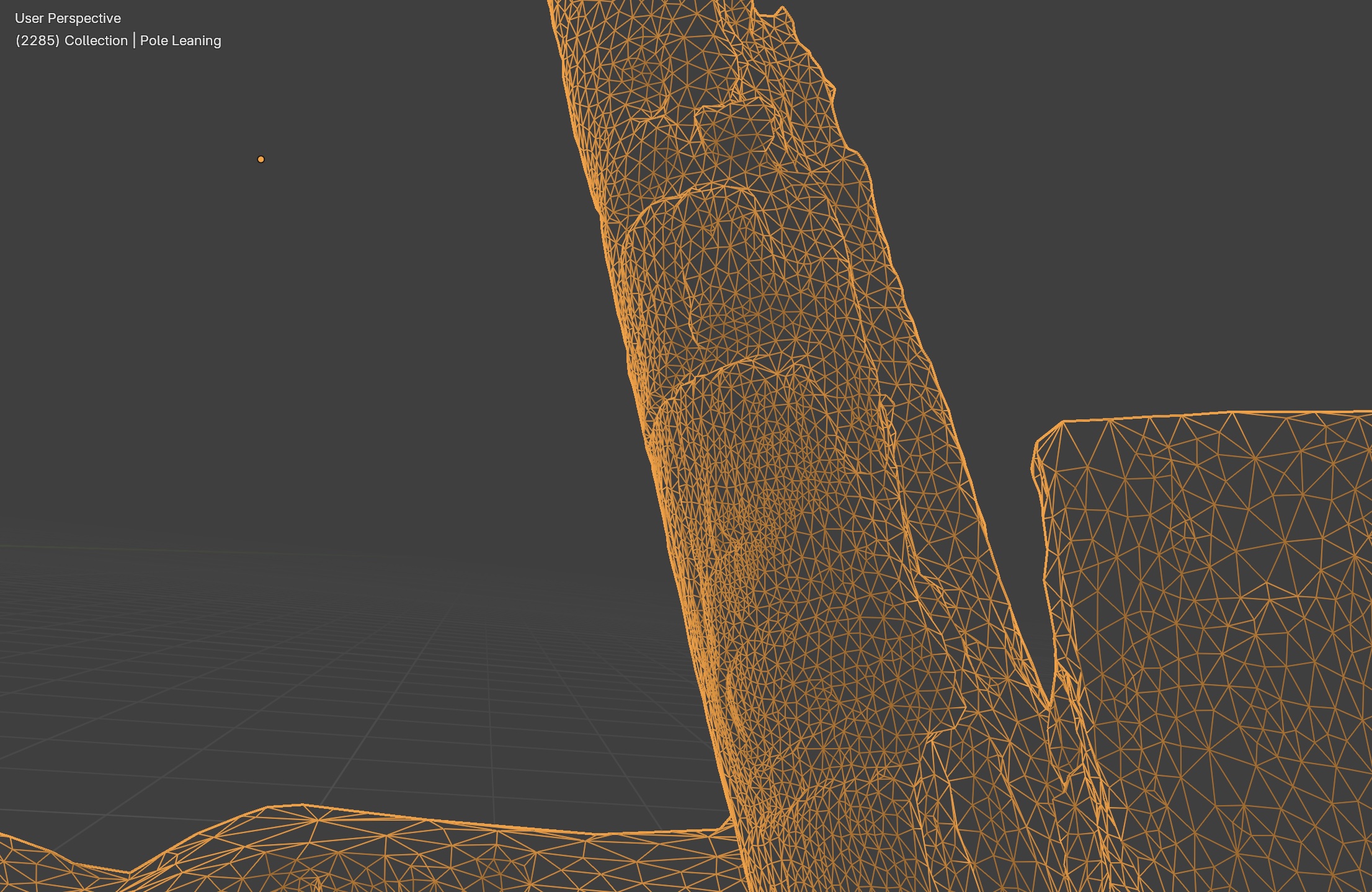
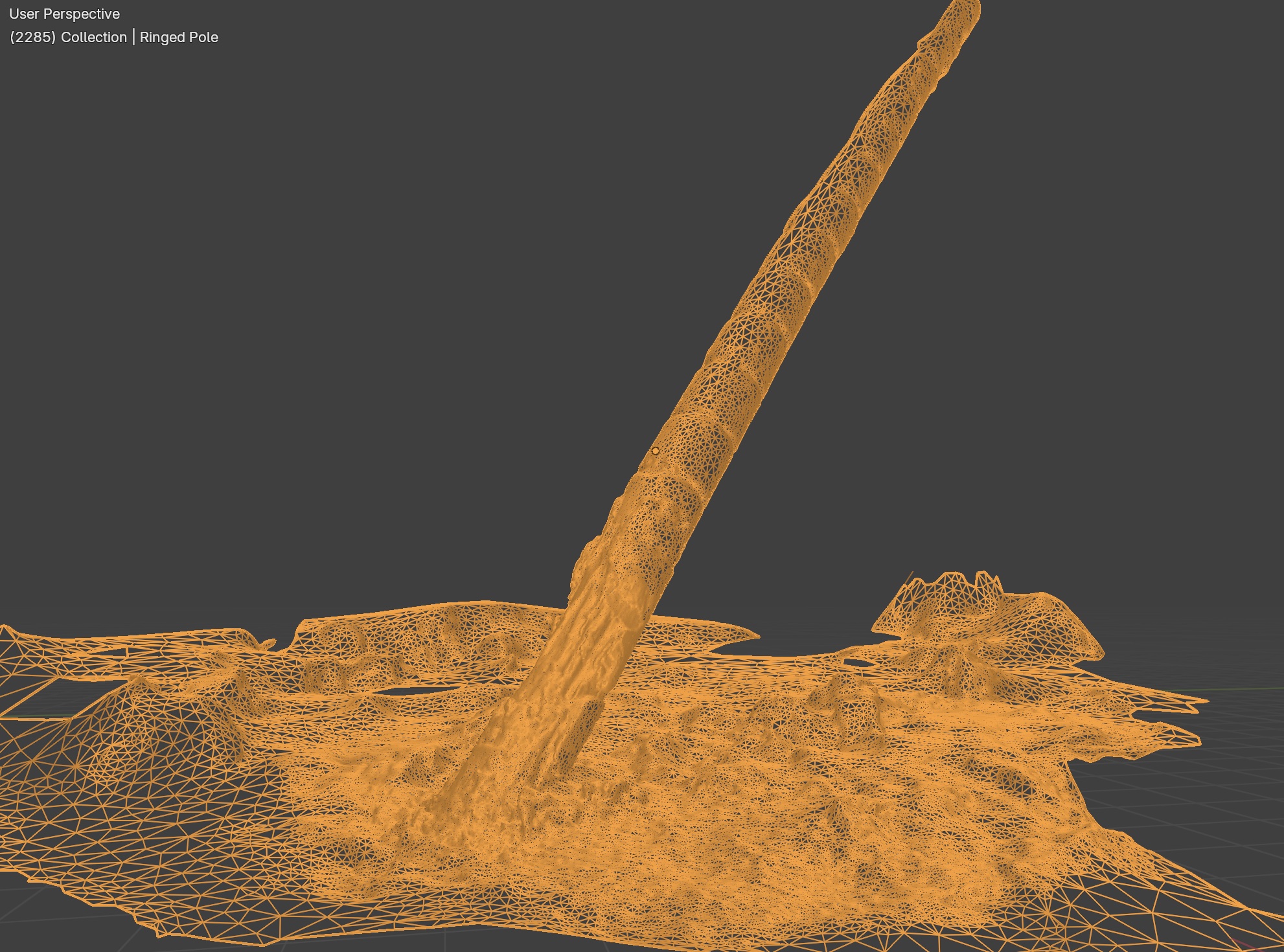
While sharing the scans themselves are subject to the protocols of the community, as a way of exploring them, Jaalen and Gwaai sought to create an immersive view for their audience of a selection of the poles so they could have a feeling of what it’s like to get up close to them at the ancient village sites.
Carving the New Skedans Pole
In preparation for a potlatch in the fall, Jaalen and Gwaai are able to put all of their learnings from the scanning and research project to work in carving a new pole for a Haida chief. Just as they refer to ancestral poles in old photos for inspiration and technique, they can now view in 3D detailed representations of old poles and other artworks from their new digital collection as they carve their new pole.
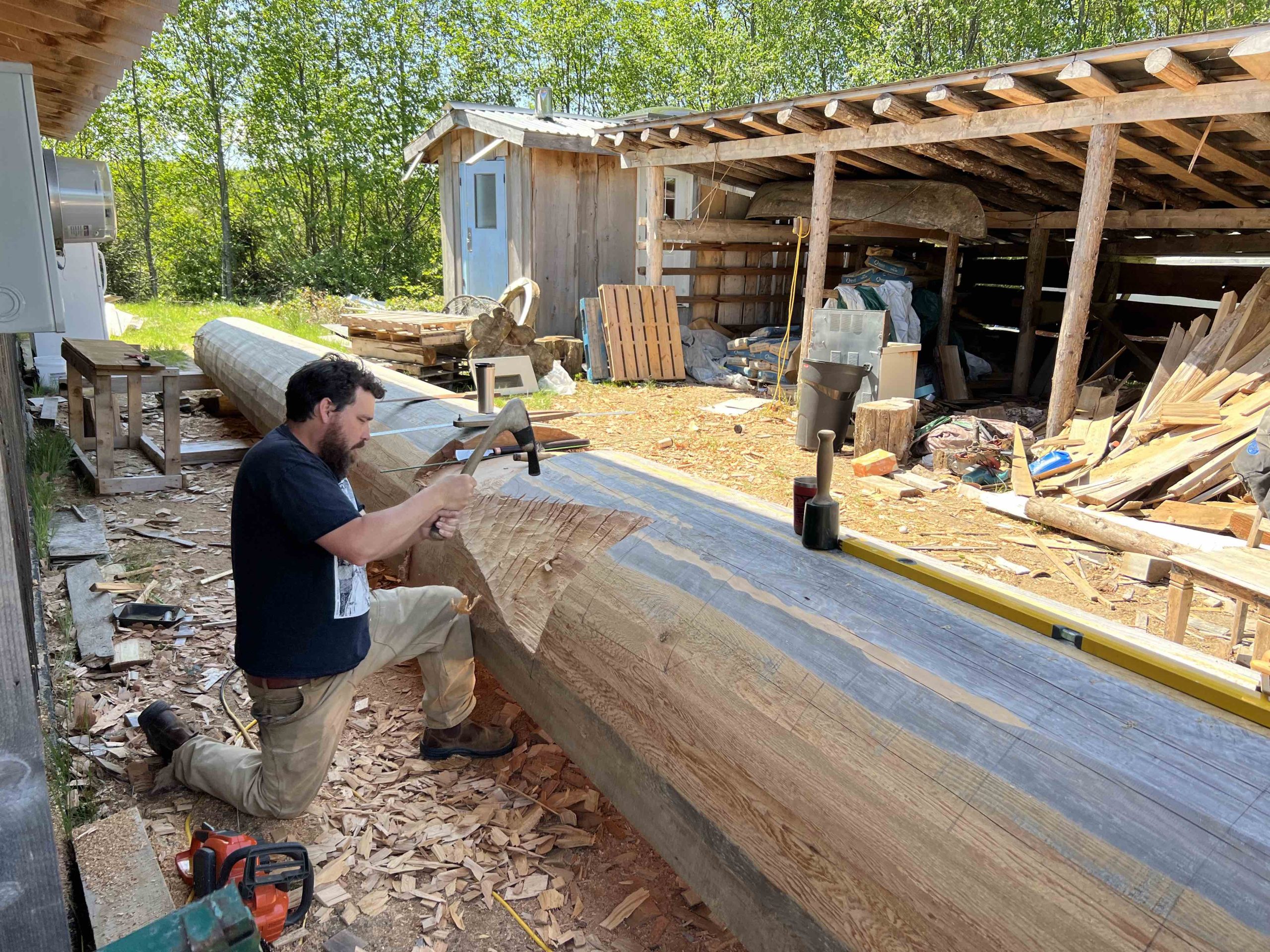
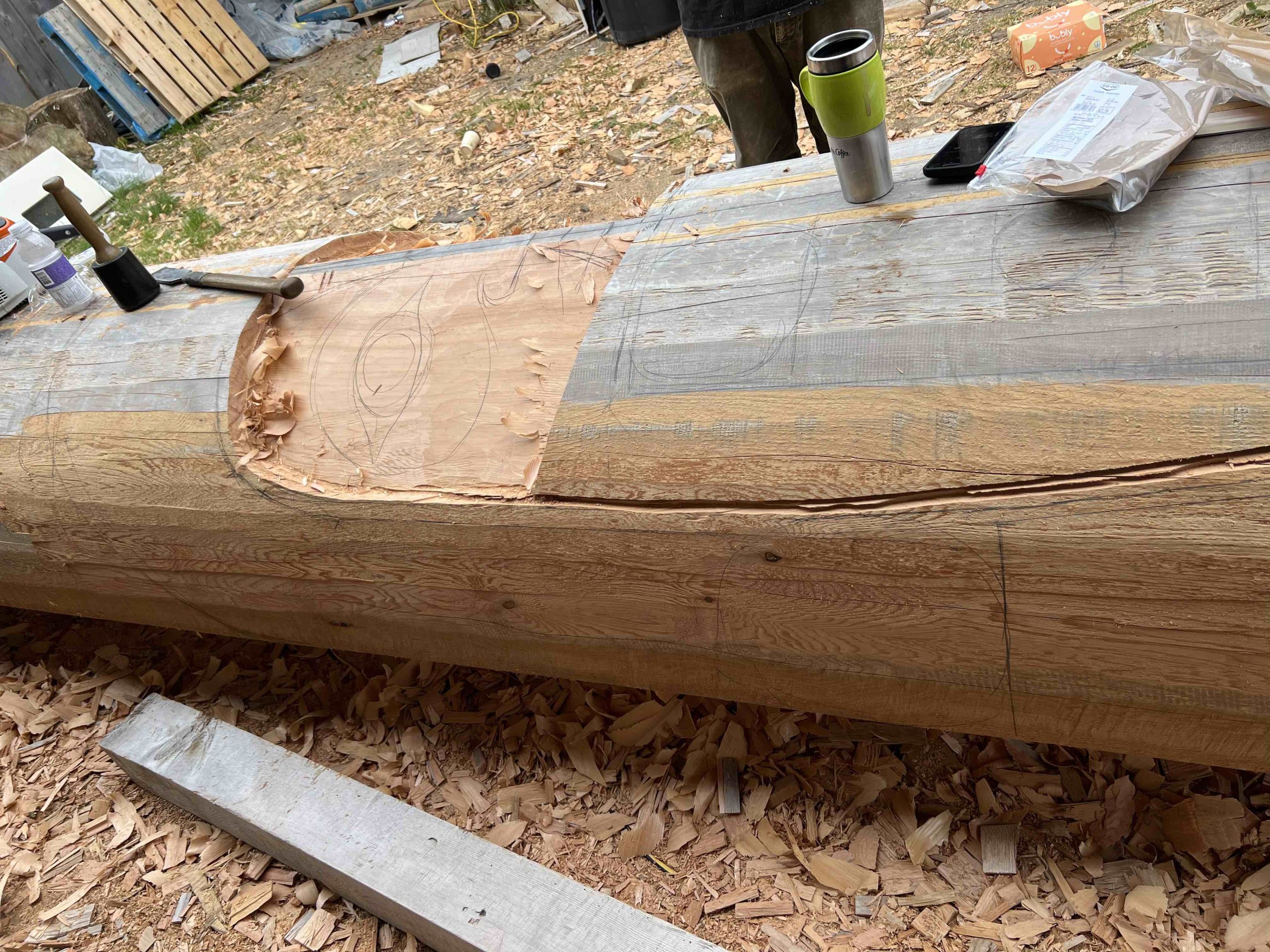
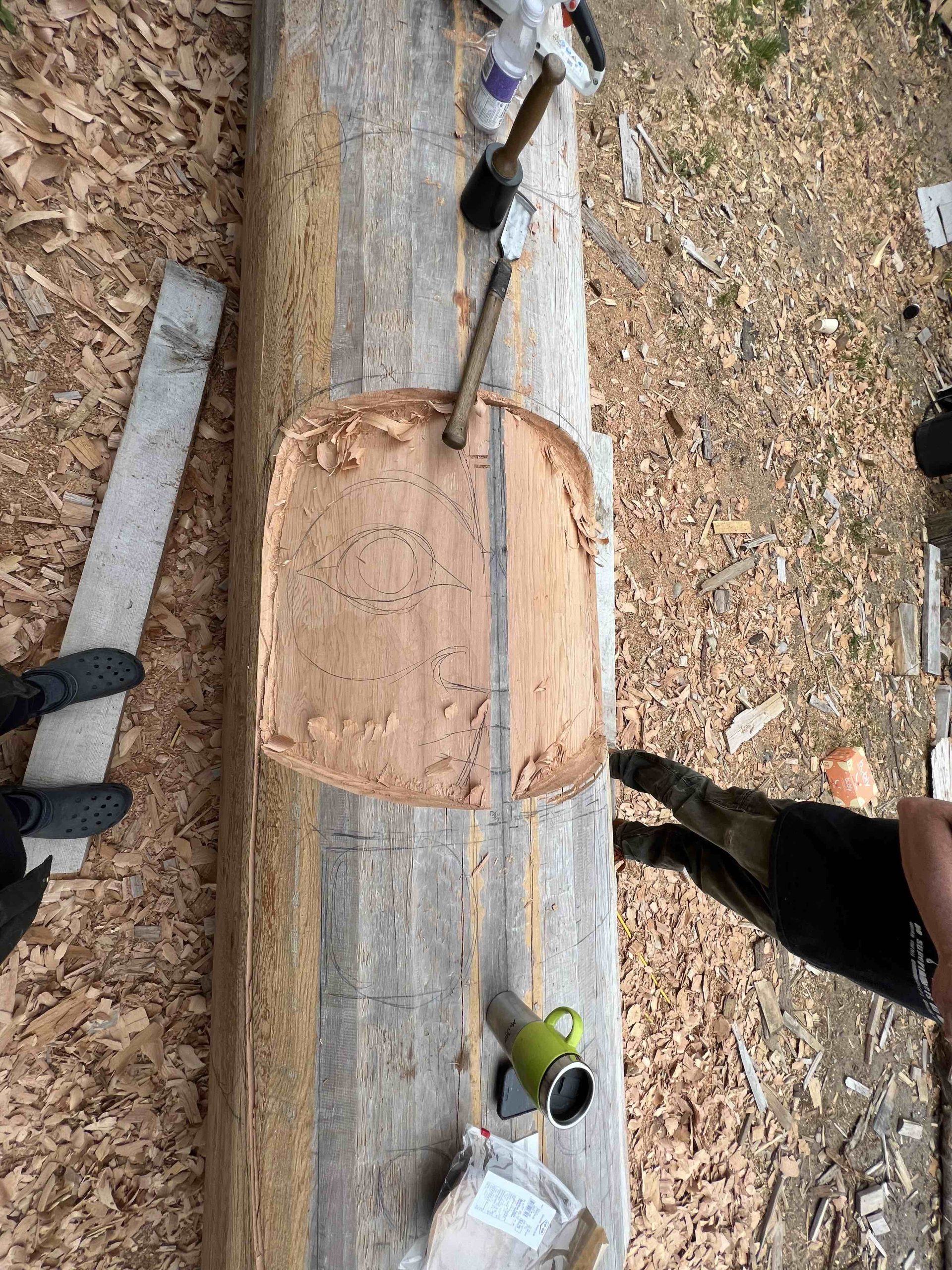
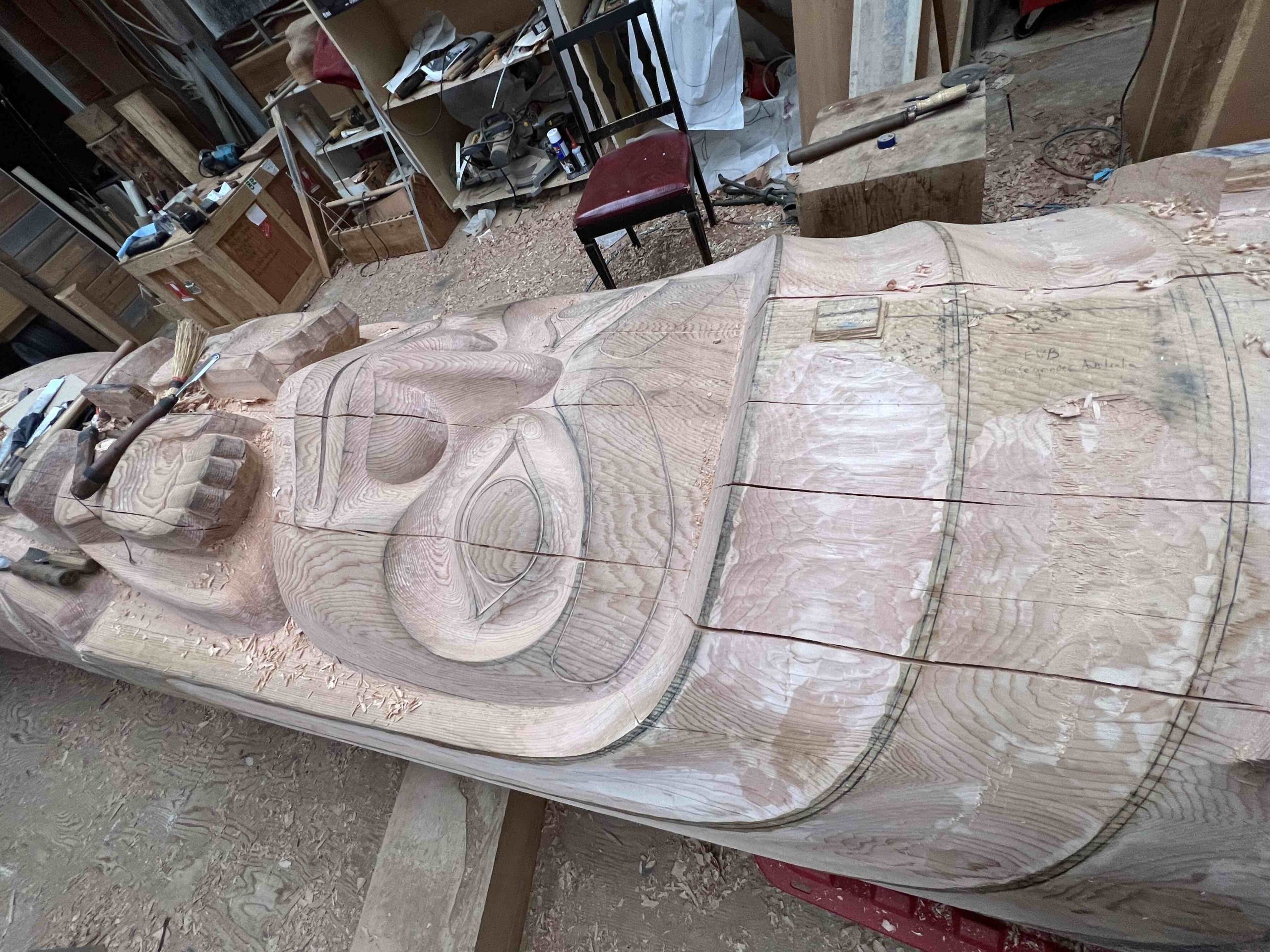
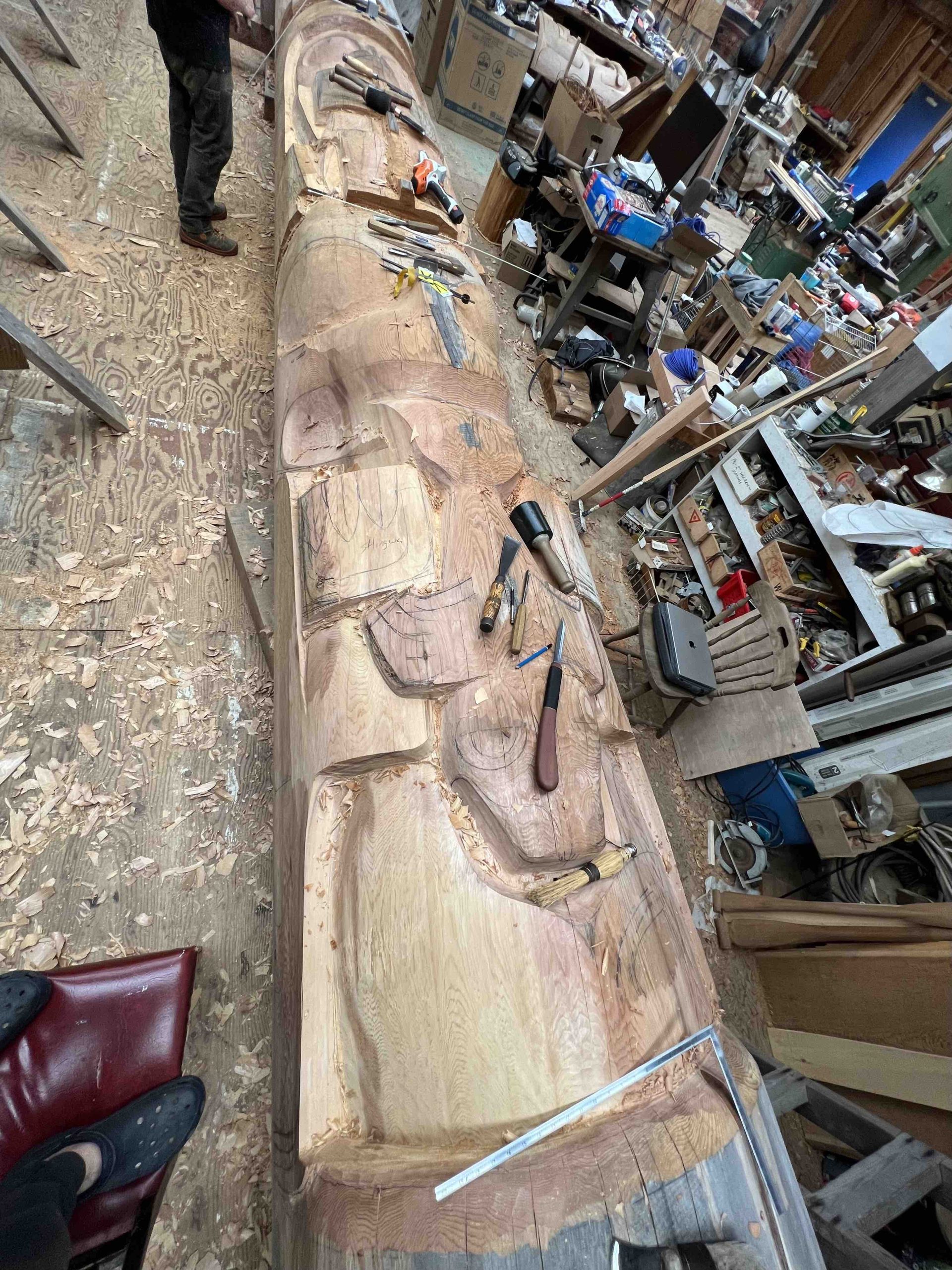
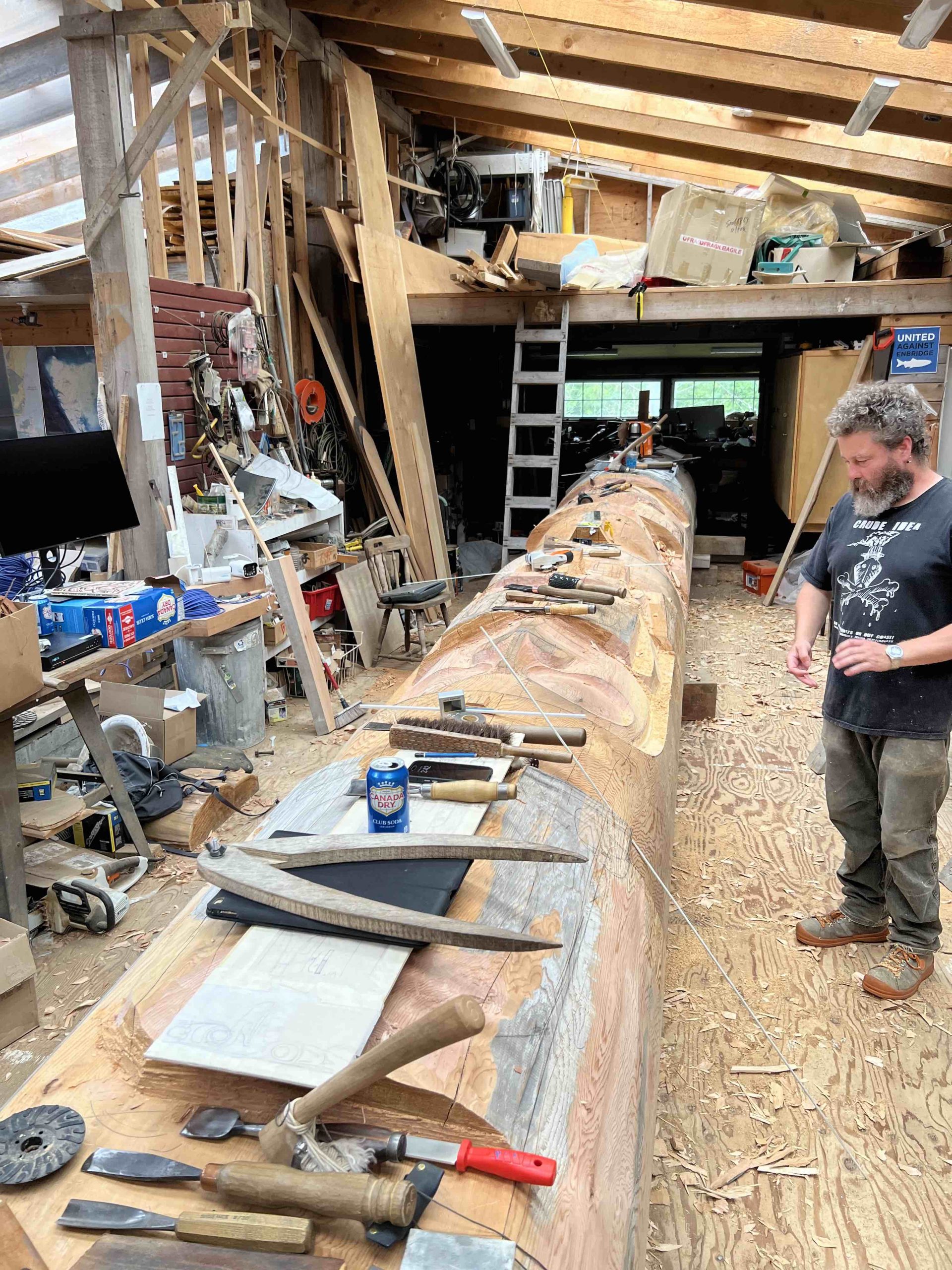
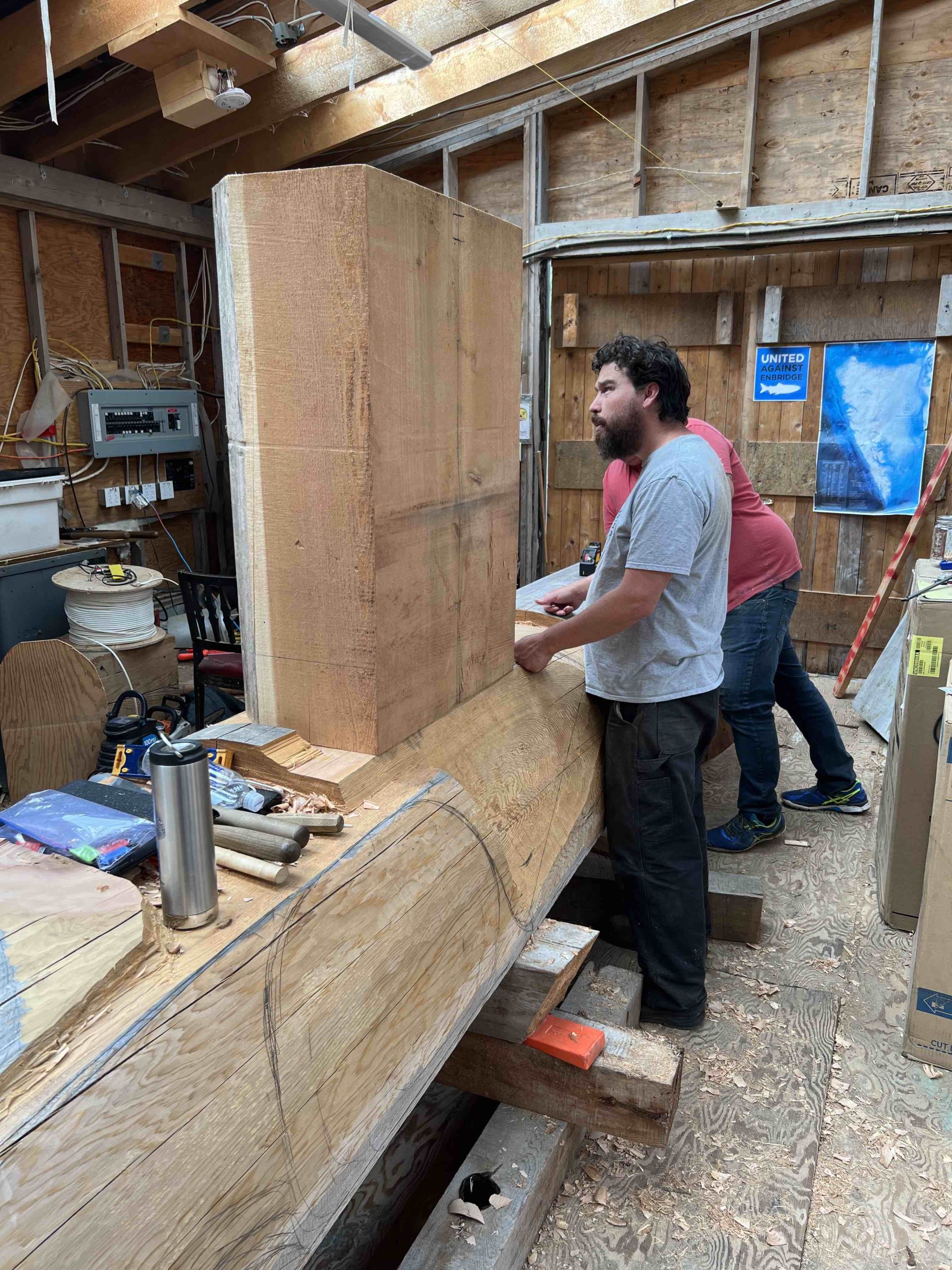
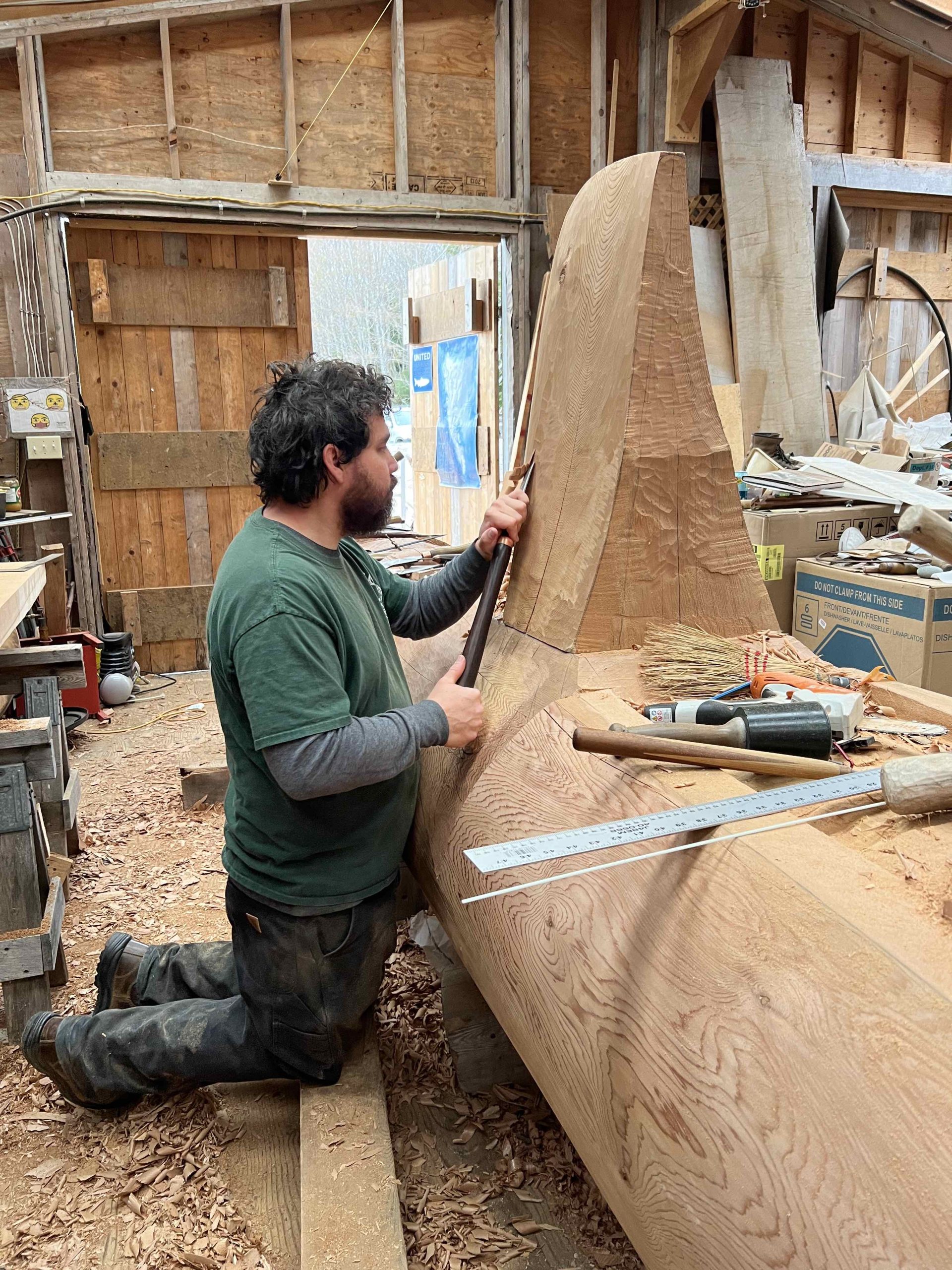
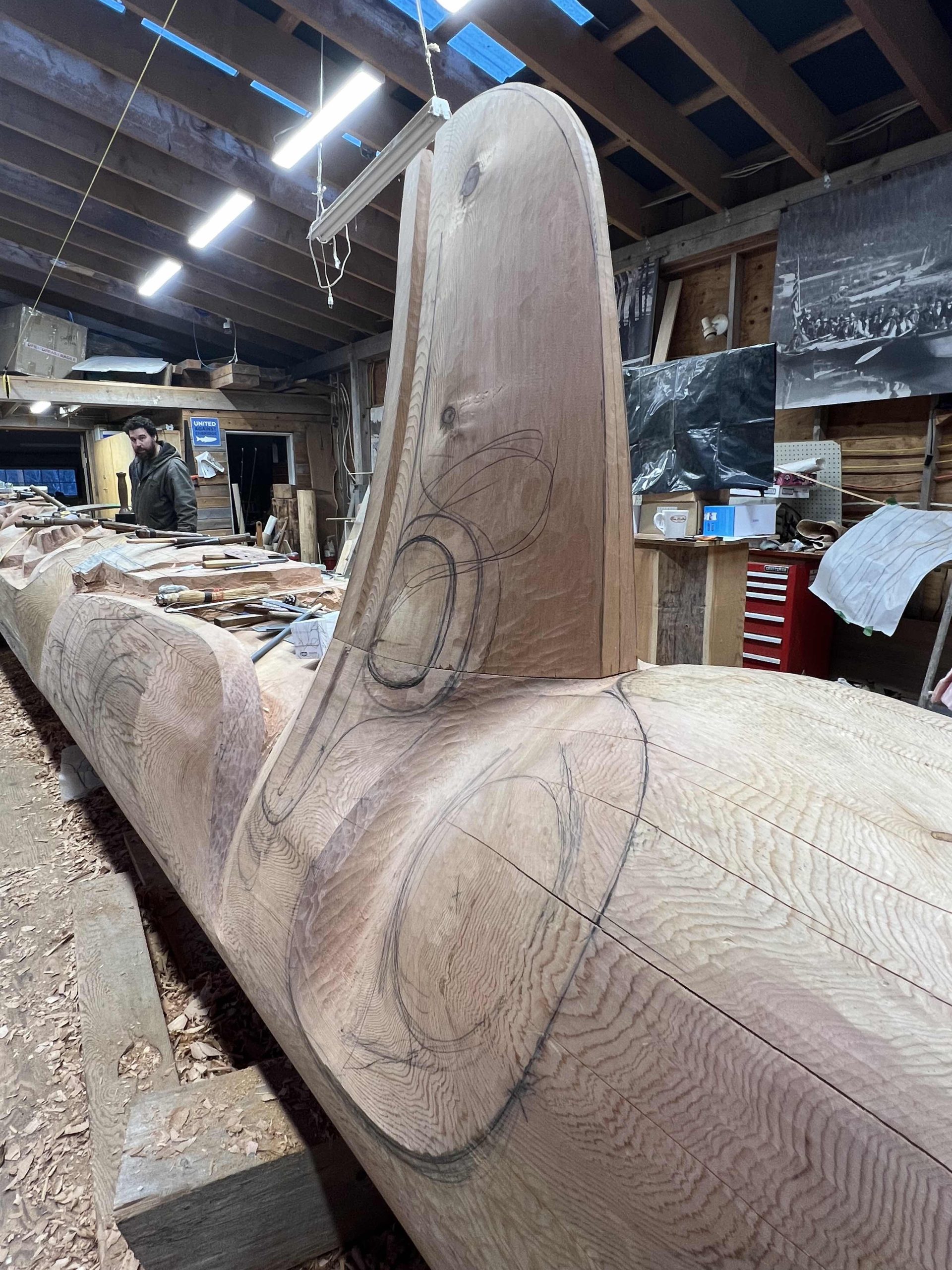
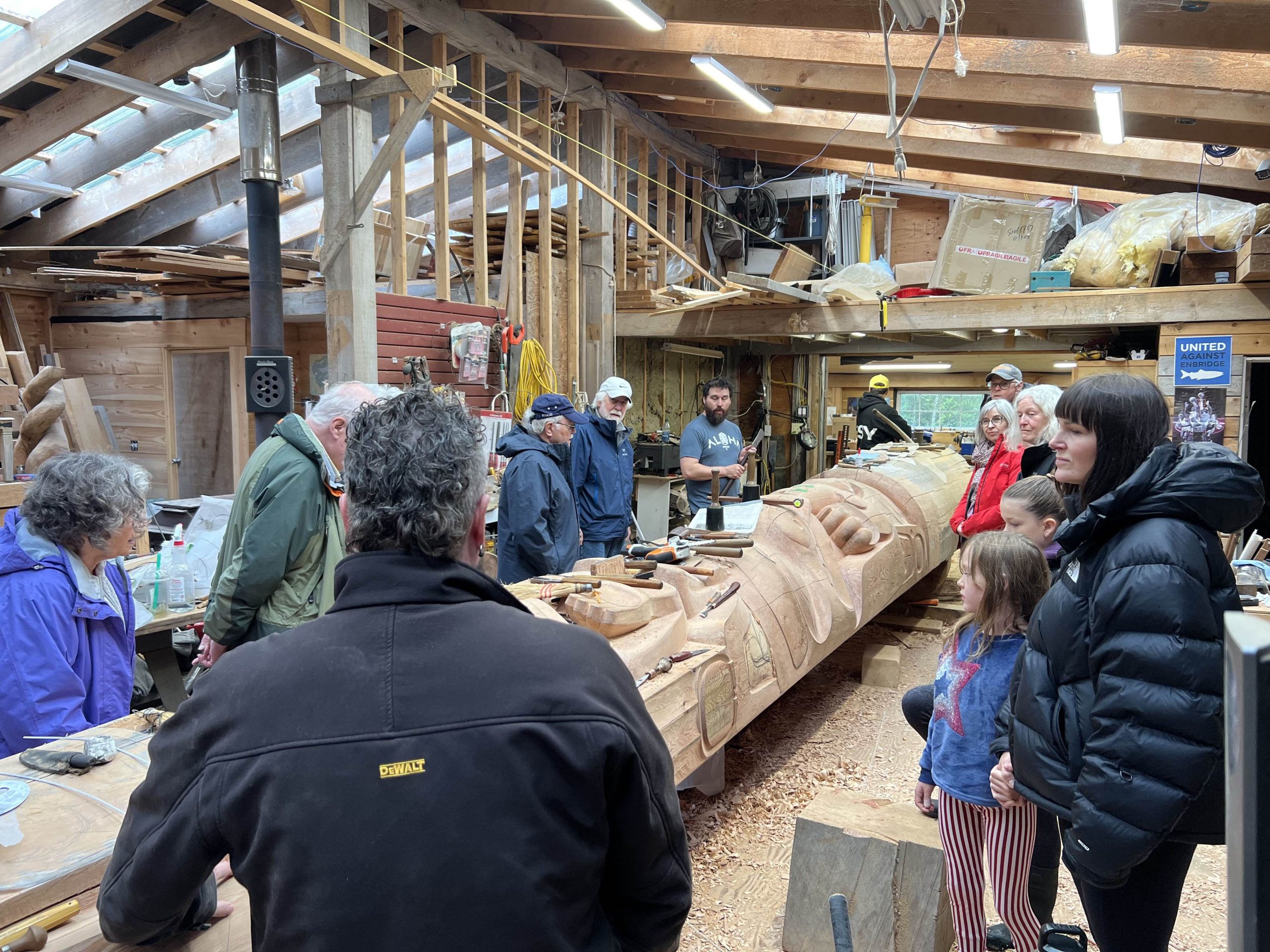
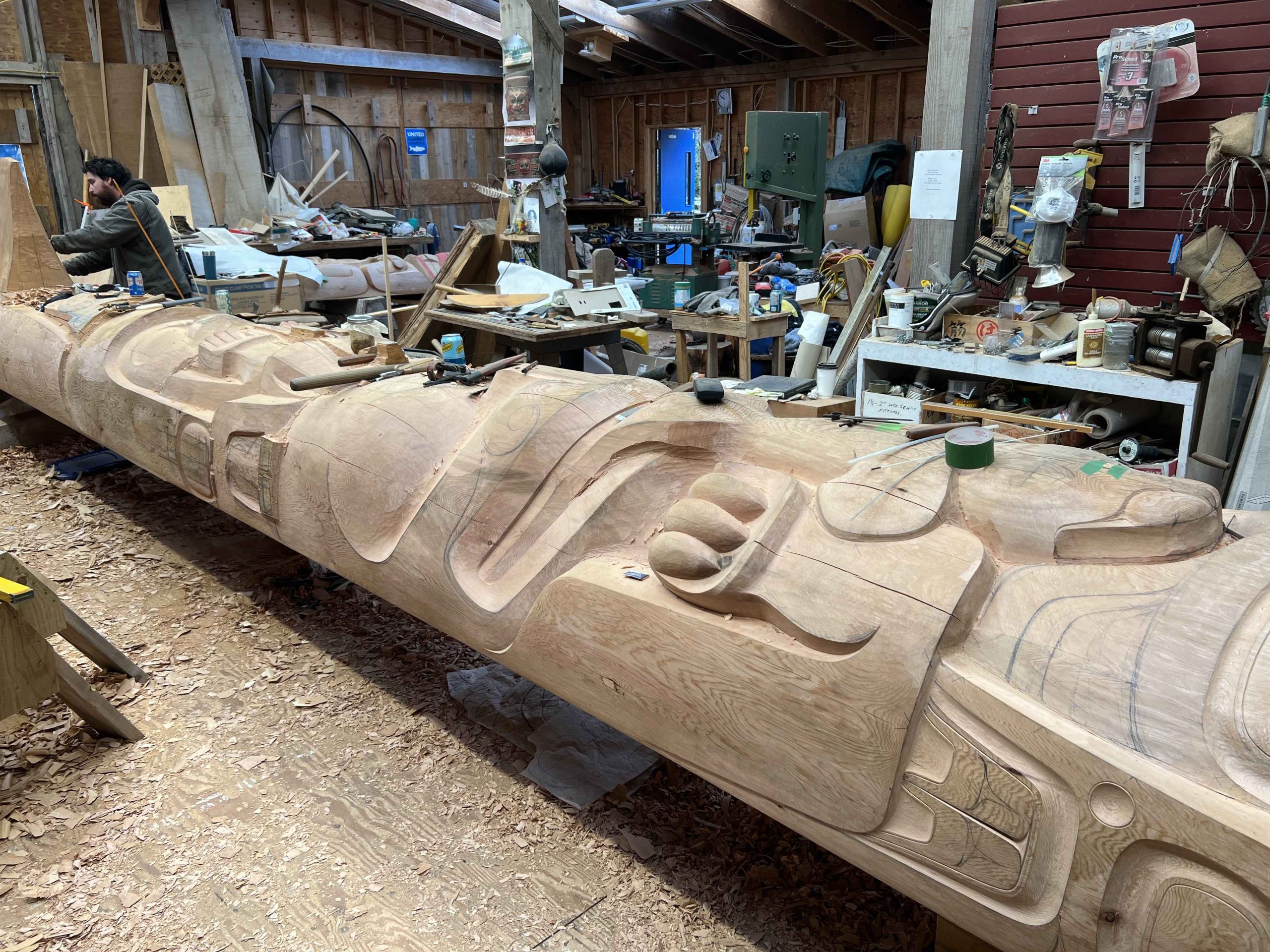
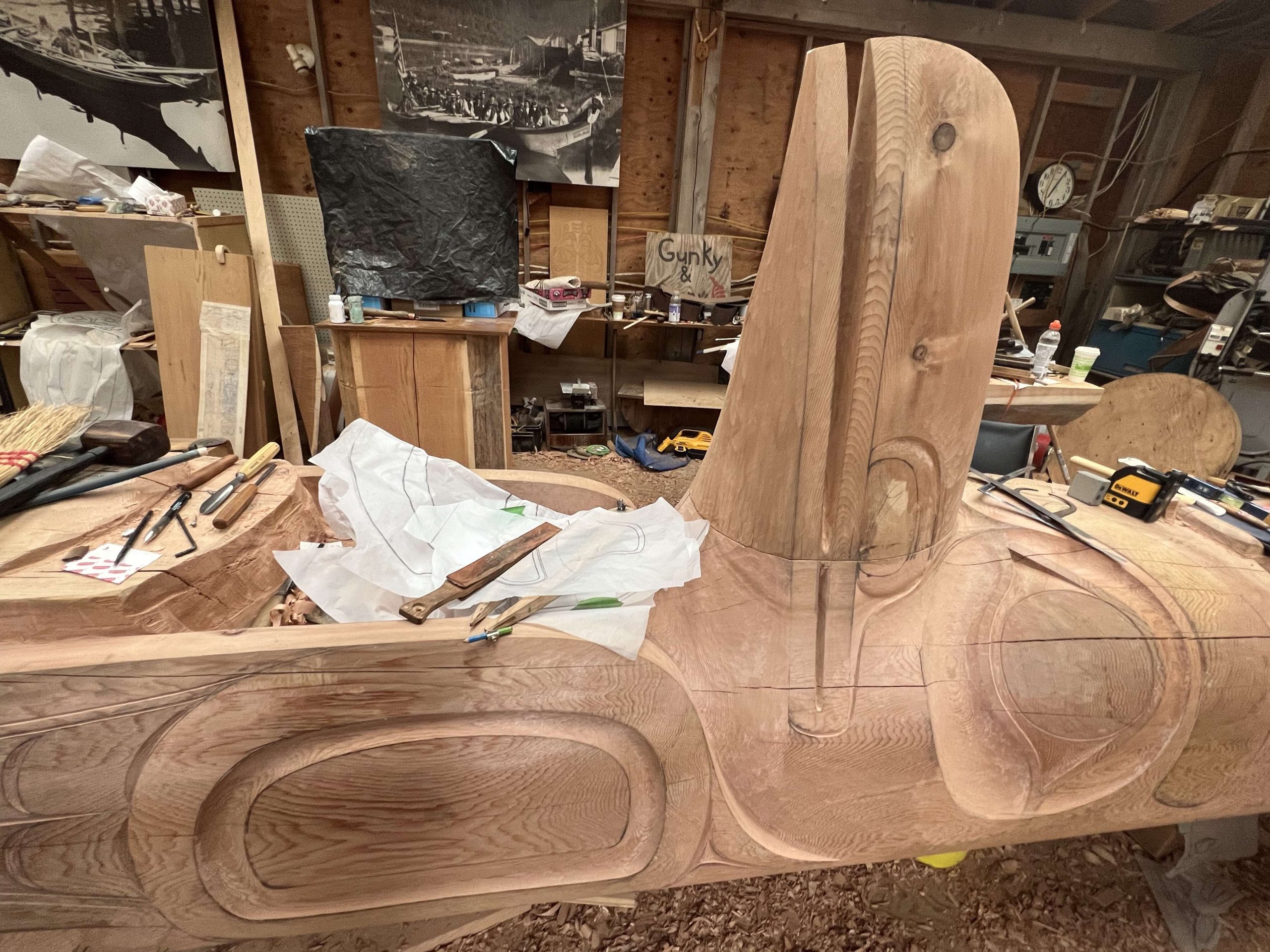
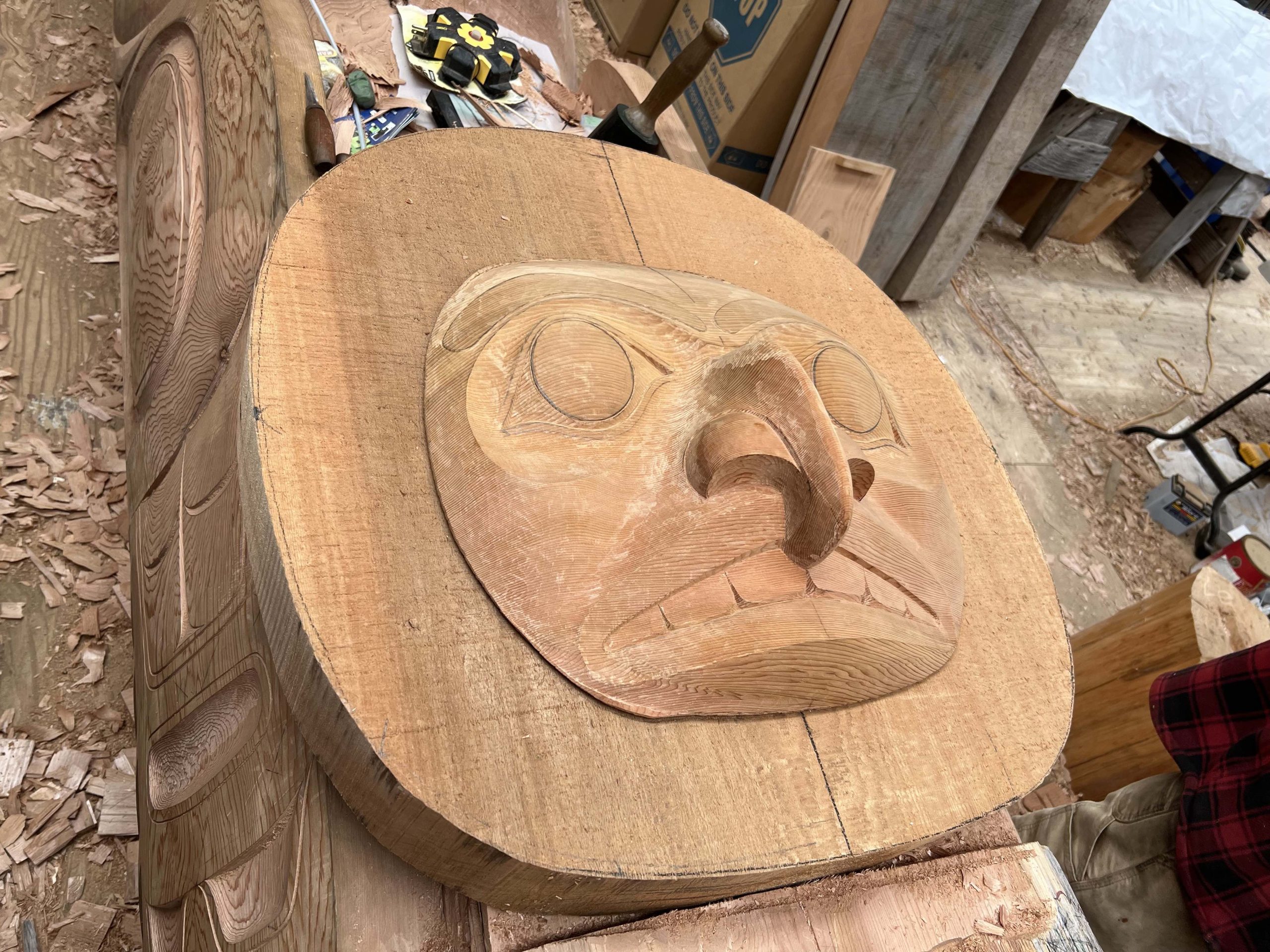
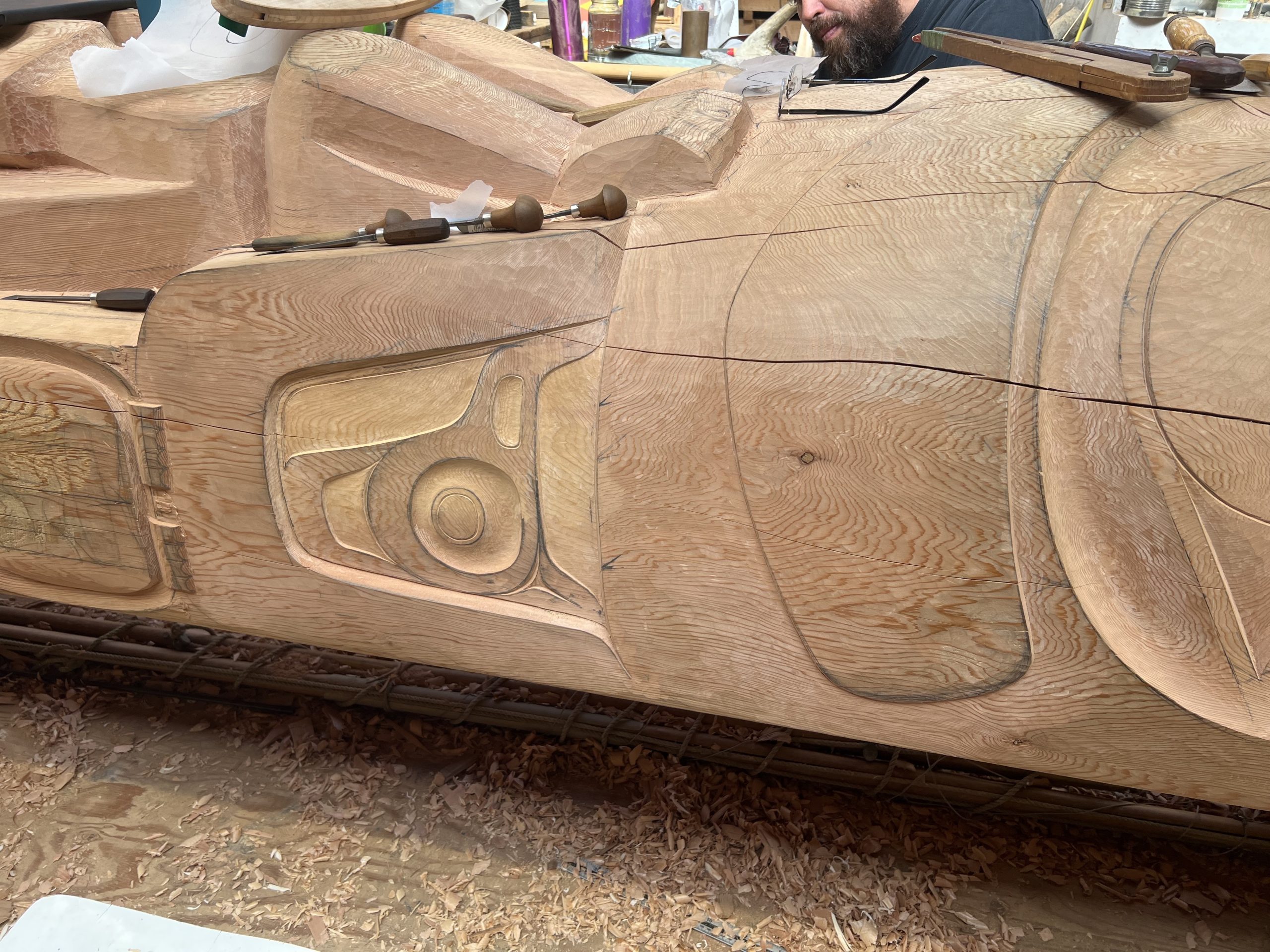
As they carved, Jaalen and Gwaai captured a timelapse of the emergence of the pole figures.
Exhibit Credits
We would like to We would like to thank all the participants and collaborators in this project in all its different facets. This online exhibit was made possible with the generous support of the Canada Council for the Arts Digital Now grant stream.
